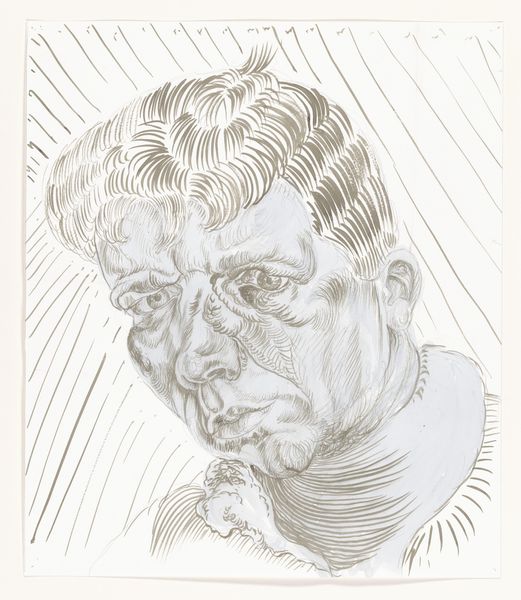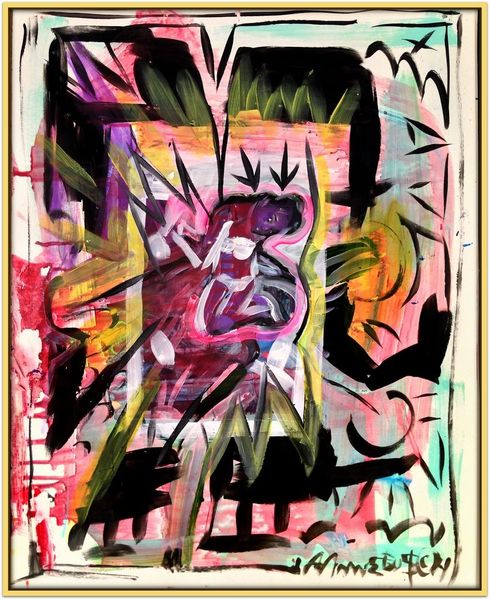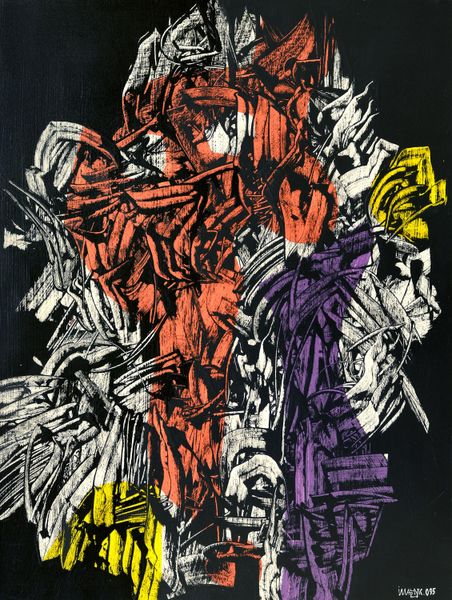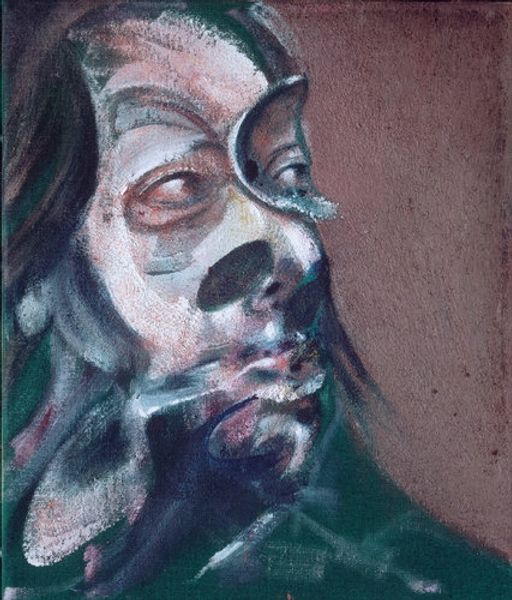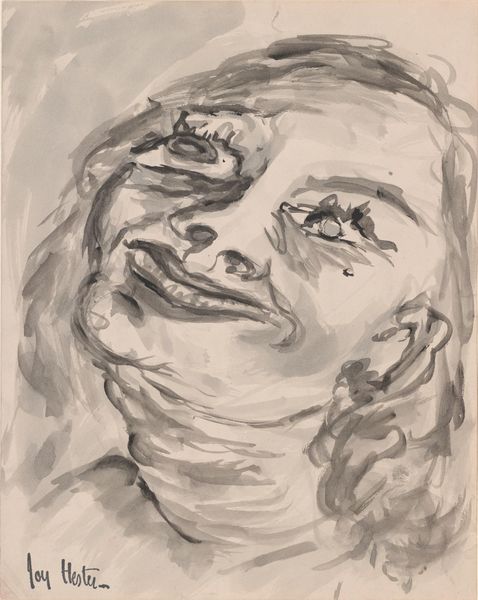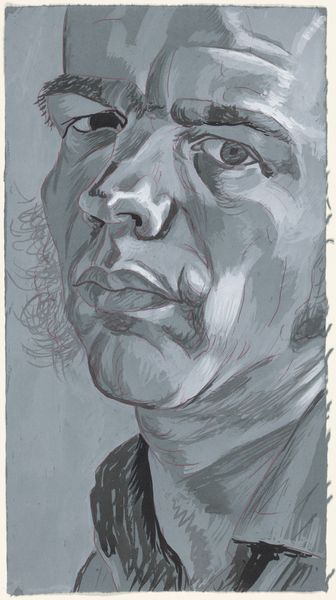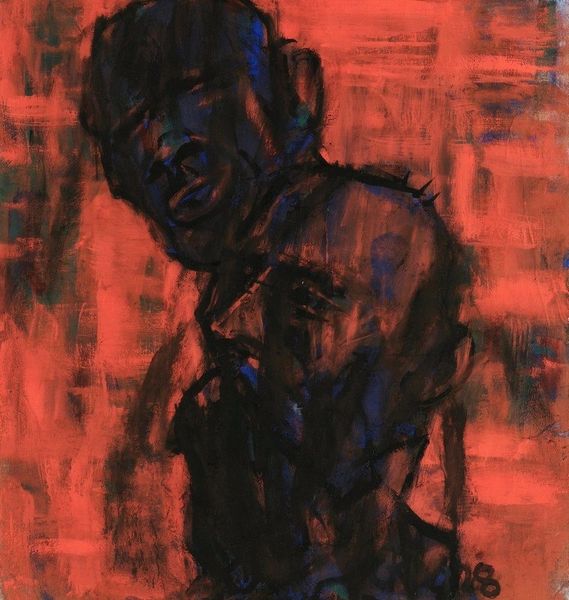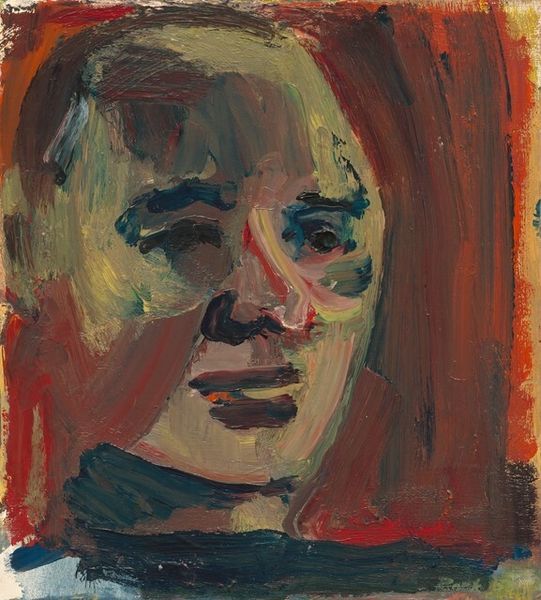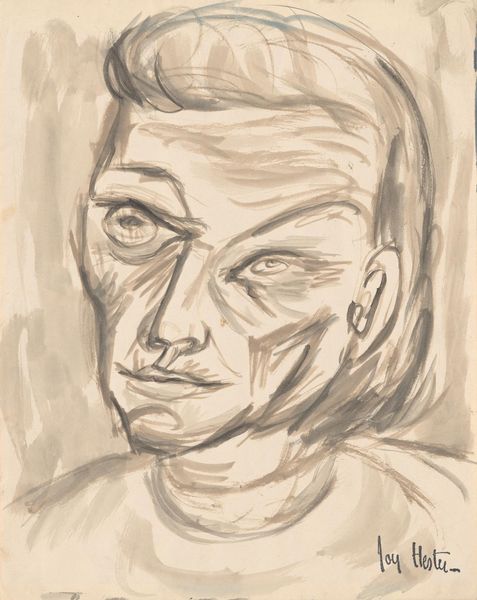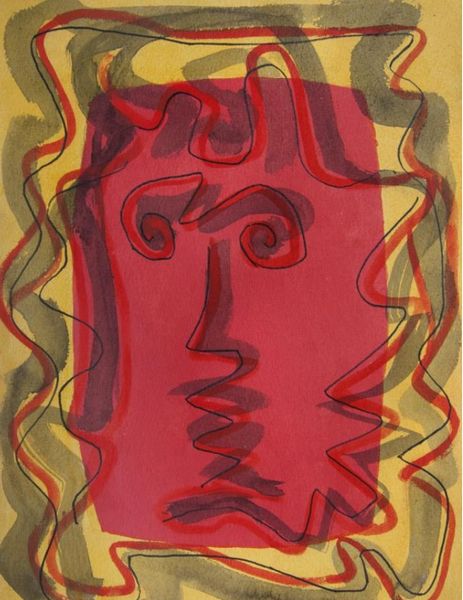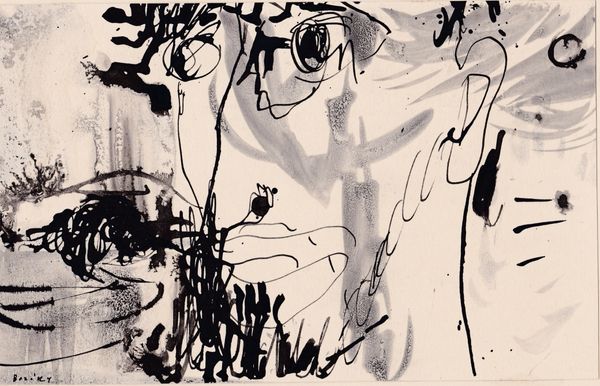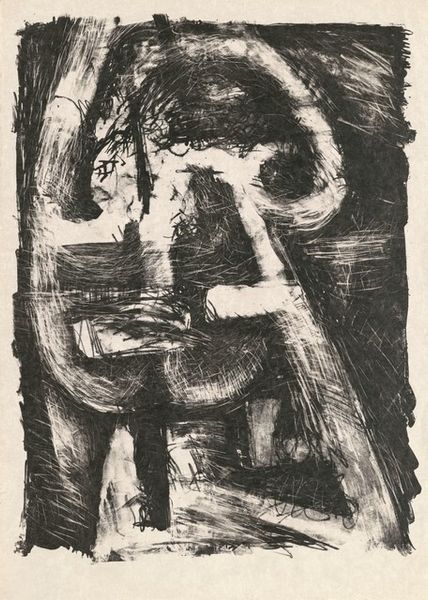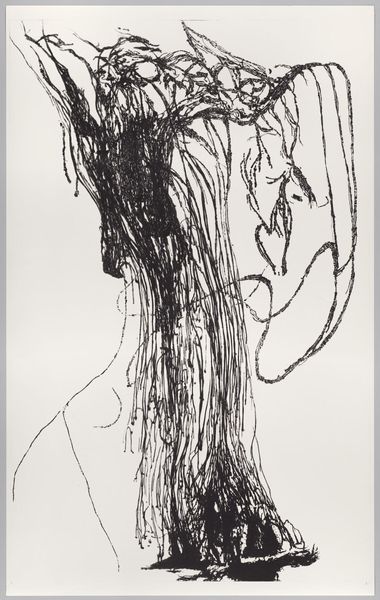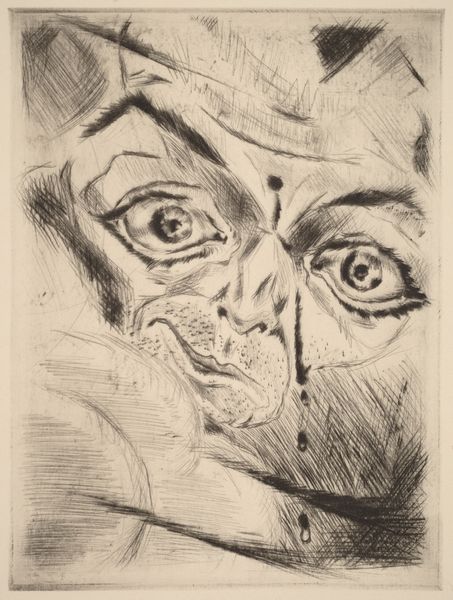
Copyright: Public domain
Editor: This portrait, simply titled "Male Portrait" from 1917, is by Stanisław Ignacy Witkiewicz and composed of colored pencils, pastels, and graphite. It really jumps out because of the way the colors clash and kind of vibrate. What's your interpretation? Curator: Ah, Witkacy! I see a fractured psyche rendered in vibrant chaos. Don't you think the jarring colors mirror the inner turmoil of the subject, maybe even the artist himself? It's almost a hallucinatory experience captured on paper, all expression and nerve. He seems to push Expressionism right up to the edge of Fauvism in this particular instance. But I wonder, do you get a sense of the time period reflected? Editor: Definitely. There’s a raw, almost frantic energy that I associate with early 20th-century modernism and that interwar period. It feels like the world’s falling apart, and the artist is trying to capture that feeling. But also… those lines, do you find them deliberately unnerving, too? Curator: Good question! Yes. The lines and the layering contribute to the anxious energy. But consider the context: Witkiewicz was experimenting with philosophy, psychology, and even drugs! This wasn't just about portraying a likeness; it was about digging into the depths of human experience, blurring the lines between reality and something more intense. Is it too bold to say, a sort of psychic autopsy on display? Editor: Psychic autopsy! I love that. It definitely changes how I see the work. It’s more than just a portrait; it’s a map of a troubled mind. Curator: Exactly. And isn’t that what makes art so exhilarating, that ability to reach beyond the surface and into the very core of existence? Thank you for offering new layers to this art. Editor: Definitely, a thrilling voyage of exploration into expression!
Comments
No comments
Be the first to comment and join the conversation on the ultimate creative platform.
